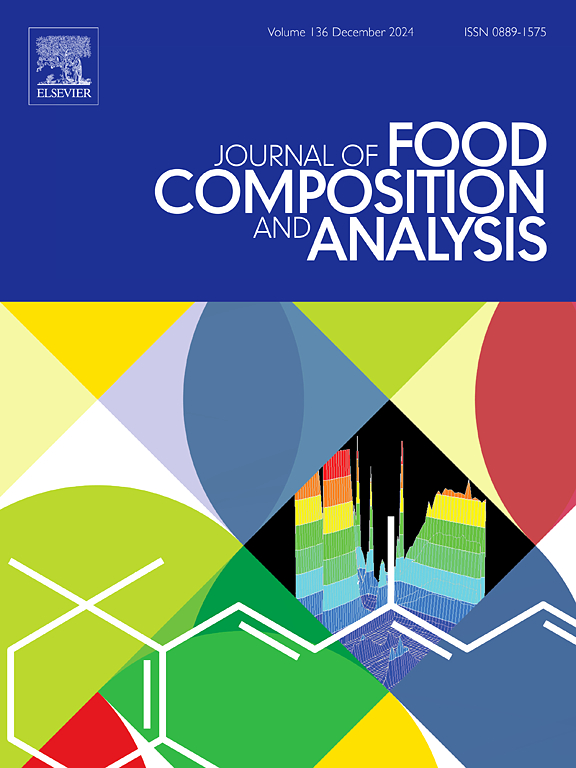Apple shrinkage correlates positively with fructose, glucose, and succinic acid and not with citric acid
IF 4.6
2区 农林科学
Q2 CHEMISTRY, APPLIED
引用次数: 0
Abstract
Both pericarp shrinkage and the sugar-acid ratio are vital factors influencing consumer preference in the apple industry. Our study examines the relationship between extrinsic appearance and intrinsic properties by investigating the effects of sugar-acid content on shrinkage, apple fruit development and shrinkage presence were investigated while the fruit was stored at 5 °C with 60 % relative humidity for up to 70 days, which categorized by packaging in microporous plastic bags. Pericarp shrinkage was assessed by exploring fruit sensory preferences, variations in structural differences, and physiological compositional status, and correlations were analyzed. Shrinkage significantly reduced water loss rate (4.44 %), accelerated water core dissipation and microcrack growth, and correlated with total sugar (r = 0.59) and total acid (r = 0.75). Summarily, pericarp shrinkage correlated positively with fructose (r = 0.37), glucose (r = 0.56), and succinic acid (r = 0.55) accumulation, but negatively with citric acid (r = -30) accumulation. The present study serves as a novel exploration of how pericarp shrinkage and sugar-acid biosynthesis and distribution in apples, losses due to cosmetic defects can be reduced for further research.
苹果收缩率与果糖、葡萄糖和琥珀酸呈正相关,而与柠檬酸无关
果皮收缩率和糖酸比都是影响苹果消费偏好的重要因素。我们的研究通过研究糖酸含量对收缩率的影响来检验外观和内在特性之间的关系,研究了苹果果实的发育和收缩率,将水果在5°C和60% %的相对湿度下储存长达70天,并将其包装在微孔塑料袋中进行分类。通过对果实感官偏好、结构差异变化和生理成分状态的研究来评估果皮收缩,并分析其相关性。收缩显著降低了失水率(4.44 %),加速了水芯耗散和微裂纹扩展,并与总糖(r = 0.59)和总酸(r = 0.75)相关。综上所述,果皮收缩与果糖(r = 0.37)、葡萄糖(r = 0.56)、琥珀酸(r = 0.55)积累呈正相关,与柠檬酸(r = -30)积累负相关。本研究为进一步研究苹果果皮收缩和糖酸的生物合成及分布提供了新的思路,为进一步研究减少因外观缺陷造成的损失提供了新的思路。
本文章由计算机程序翻译,如有差异,请以英文原文为准。
求助全文
约1分钟内获得全文
求助全文
来源期刊

Journal of Food Composition and Analysis
工程技术-食品科技
CiteScore
6.20
自引率
11.60%
发文量
601
审稿时长
53 days
期刊介绍:
The Journal of Food Composition and Analysis publishes manuscripts on scientific aspects of data on the chemical composition of human foods, with particular emphasis on actual data on composition of foods; analytical methods; studies on the manipulation, storage, distribution and use of food composition data; and studies on the statistics, use and distribution of such data and data systems. The Journal''s basis is nutrient composition, with increasing emphasis on bioactive non-nutrient and anti-nutrient components. Papers must provide sufficient description of the food samples, analytical methods, quality control procedures and statistical treatments of the data to permit the end users of the food composition data to evaluate the appropriateness of such data in their projects.
The Journal does not publish papers on: microbiological compounds; sensory quality; aromatics/volatiles in food and wine; essential oils; organoleptic characteristics of food; physical properties; or clinical papers and pharmacology-related papers.
 求助内容:
求助内容: 应助结果提醒方式:
应助结果提醒方式:


